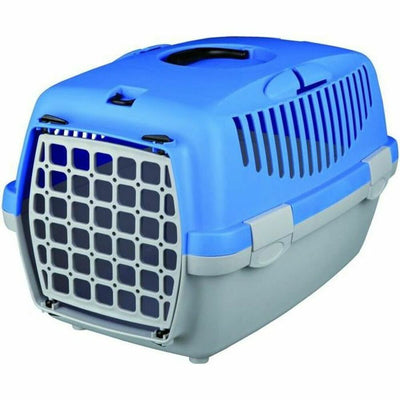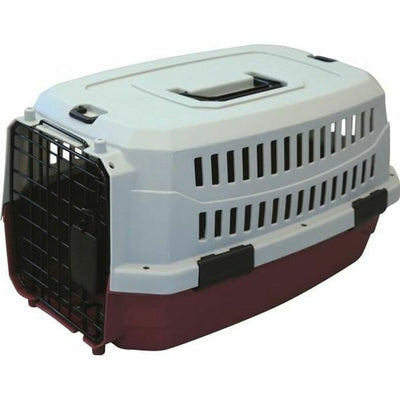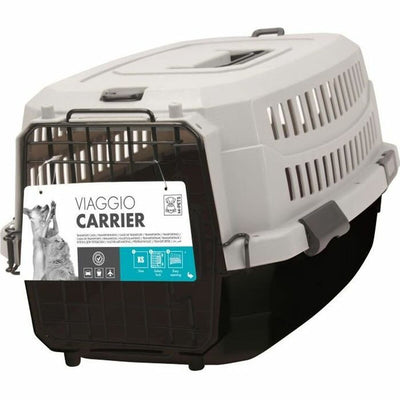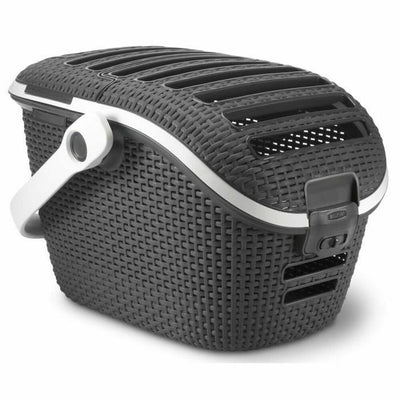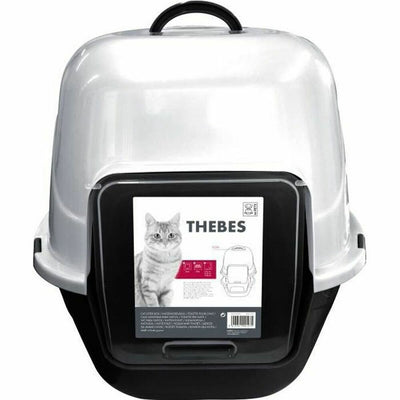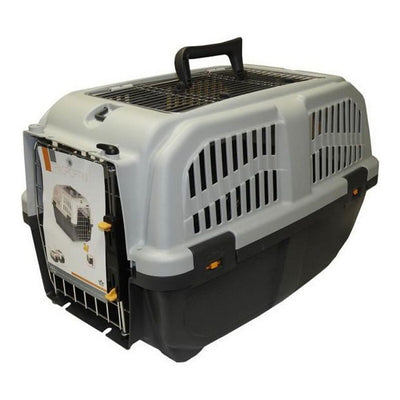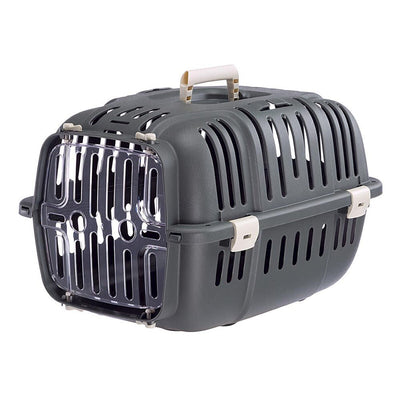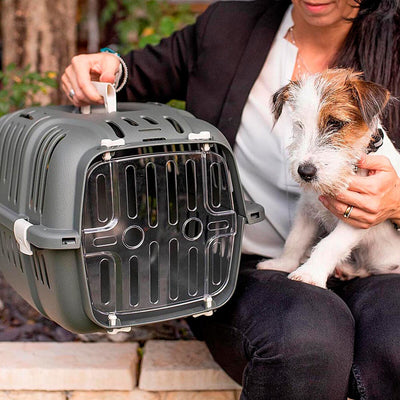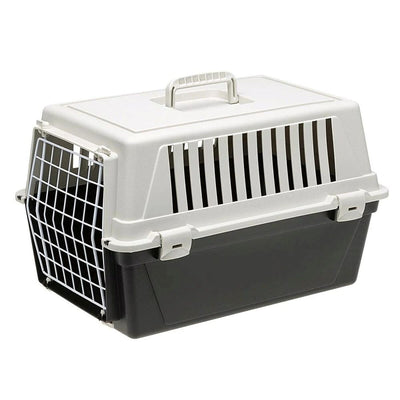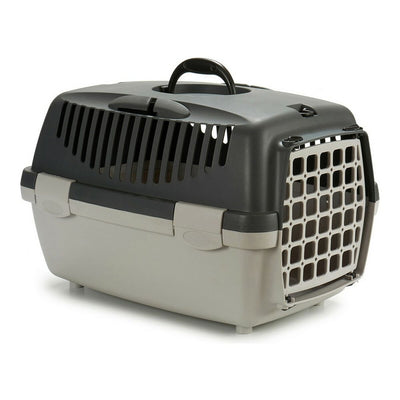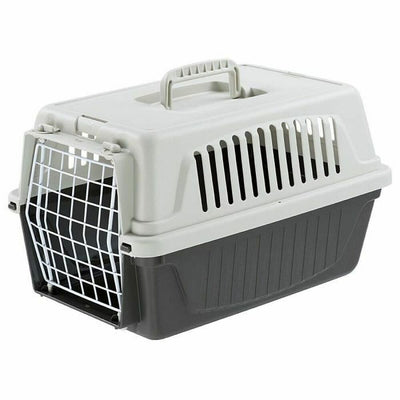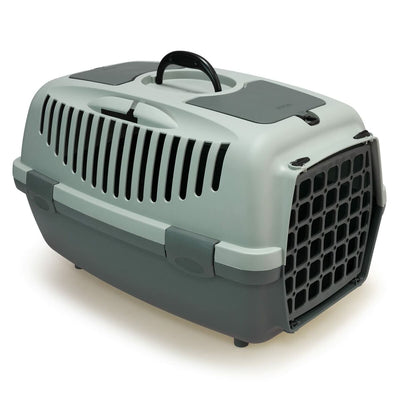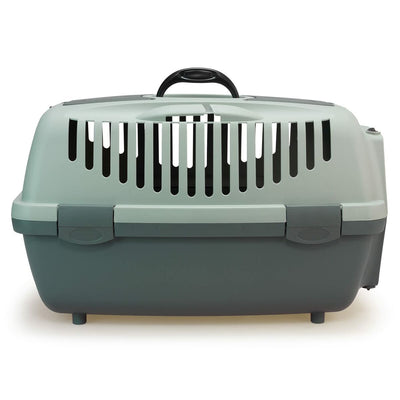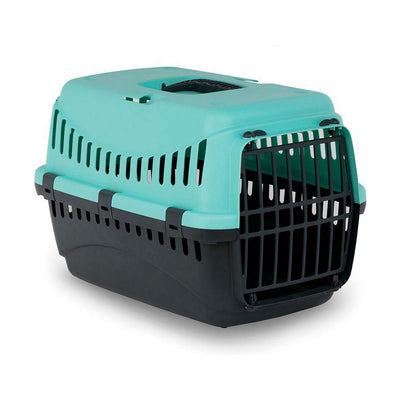
Cages, kennels and training boxes for cats
A comprehensive guide to cat cages, kennels and carriers
As responsible pet owners, ensuring the safety, comfort and well-being of our feline friends is of the utmost importance. Cat cages, kennels and carriers play a crucial role in meeting these needs, whether as a safe space at home, a safe haven when traveling or as a temporary enclosure for various situations. In this comprehensive guide, we'll look at the different types of cat cages, the materials used to build them, and how to choose the right cage for your cat's specific needs.
Types of cat cages, kennels and carriers
There are many different varieties of cat cages, kennels and carriers that you can use in your home. Let's look at the most common types:
- Wire cages:
Wire cages are a popular choice for indoor use. They provide adequate ventilation and visibility for you and your cat. These cages often feature multiple levels, ramps, and platforms to create an engaging environment for your pet. Make sure the wires are spaced far enough apart to prevent escape and choose cages with sturdy construction
- Plastic carrier:
Plastic transport boxes are often used to transport cats to vet visits or when traveling. They are lightweight, durable, and often feature a top-loading or front-loading design for easy access. Look for carriers with ventilation holes and a secure locking mechanism to keep your cat safe during travel.
- Soft-sided straps:
Soft-sided carriers are ideal for short trips or for cats who may find traditional carriers intimidating. They are lightweight, foldable and often feature mesh panels for ventilation. Choose a carrier with a sturdy base, adequate ventilation, and secure zippers.
- Cardboard carrier:
Cardboard carriers are inexpensive and are suitable for short-term use, for example for visits to the vet. While they are not as durable as other materials, they provide a temporary and disposable solution. Make sure the wearer is well ventilated and has a secure closure.
- Closed kennels:
Kennels are larger enclosures that are suitable for both indoor and outdoor use. They offer your cat more freedom of movement and some designs have additional features such as scratching posts and hiding places. When choosing a dog house, consider the weather resistance of the material when used outdoors.
Top materials
There are numerous materials that manufacturers can use for cat cages, kennels, and carriers. However, we recommend sticking with the following options:
- Metal wire:
Wire cages are typically made of sturdy metal and offer durability and stability. Look for cages with non-toxic coatings to ensure your cat's safety. Stainless steel cages are rust resistant and easy to clean.
- Plastic:
Plastic carrier bags are lightweight and therefore easy to transport when traveling. Make sure the plastic is durable and free of harmful chemicals. Some racks have additional features such as a removable lid for easy cleaning.
- Material:
Soft tote bags are often made of durable fabric such as nylon or polyester. Check durability for ventilation panels and reinforced seams. For easy cleaning, these straps are machine washable.
- Cardboard:
Cardboard carriers are made of sturdy corrugated cardboard. Although they are not as durable as other materials, they are inexpensive and recyclable.
Choosing the right cat cage, dog house or transport box
Now you know a little more about the most common types of cat transport products and the materials used. However, to choose the right cage, kennel or carrier for your pet, you also need to consider the following:
Size
Consider your cat's size and choose a cage or carrier that has enough space for him to stand, turn around and lie down comfortably. A cramped space can cause stress and discomfort.
ventilation
Good ventilation is crucial, especially during prolonged confinement. Make sure the enclosure you choose has enough ventilation to keep your cat comfortable.
durability
Evaluate the durability of the material to ensure it can withstand your cat's activity level. For example, wire cages should have sturdy construction and supports should be made of durable and non-toxic materials.
Easy cleaning
Choose a cage or carrier that is easy to clean to ensure a hygienic environment for your cat. Removable inserts or easily washable materials are an advantage.
Safety devices
Look for safety features such as secure locking mechanisms, escape-proof latches, and well-ventilated designs. These features are essential for both home use and travel.
FAQs
Can I use a soft-sided carrier bag for air travel?
Some airlines allow soft-side carriers for cabin travel, but it is important to check each airline's regulations. Make sure the airline meets the airline's size and ventilation requirements.
How can I make my cat more comfortable in a carrier?
Familiarize your cat with the transport box by placing treats, toys or a cozy blanket inside. Gradually associate positive experiences with the wearer to reduce fears.
Are cardboard boxes suitable for long journeys?
Cardboard carriers are best for short-term use. For long trips, opt for more durable materials such as plastic or soft carrier bags that offer greater comfort and safety.
Can I use a wire cage as a permanent home for my cat?
While wire cages can be used for temporary confinement, they are not ideal as a permanent home. Cats need more space and enrichment. Consider larger enclosures such as kennels for longer periods.
How often should I clean my cat's carrier or cage?
To maintain a hygienic environment, regular cleaning is essential. Clean the carrier or cage at least once a week, or more frequently if necessary, especially after travel or accidents.


